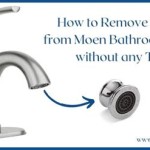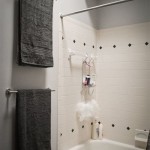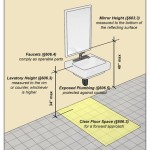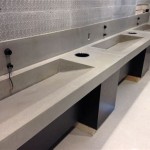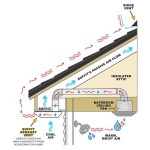What Type of Bathroom Sink Is Best for Barrier-Free Design?
Barrier-free bathroom design prioritizes accessibility and ease of use for individuals with mobility limitations, disabilities, or aging needs. Selecting the right bathroom sink plays a crucial role in achieving a truly inclusive and functional space. This article explores the key features and types of bathroom sinks best suited for barrier-free design.
Wall-Mounted Sinks: Wall-mounted sinks offer significant advantages in barrier-free bathrooms. Their open space underneath allows for wheelchair access, facilitating comfortable use for individuals with limited mobility. The height of these sinks can be easily customized during installation to accommodate varying needs. This flexibility is crucial for ensuring comfortable usage for both seated and standing users. Additionally, wall-mounted sinks contribute to a visually spacious bathroom environment.
Console Sinks: While visually appealing, console sinks require careful consideration for barrier-free applications. Some models may have exposed plumbing underneath, which can pose a potential hazard for wheelchair users. However, console sinks with a shrouded or recessed plumbing design can be appropriate. Similar to wall-mounted sinks, console sinks offer customization in height during installation. It's essential to select a console sink with adequate knee clearance underneath to ensure accessibility.
Pedestal Sinks: Pedestal sinks are generally not recommended for barrier-free bathrooms. The pedestal base restricts wheelchair access and limits knee clearance, making it difficult for users with mobility impairments to maneuver comfortably. The lack of under-sink storage also presents a challenge for storing essential bathroom items within easy reach.
Undermount Sinks: Undermount sinks, installed beneath the countertop, are a viable option for barrier-free design when paired with the right countertop. They create a seamless transition between the countertop and sink, making it easier to clean and maintain. This seamless surface also facilitates easier maneuvering of items across the countertop for individuals with limited dexterity. Selecting an appropriately sized countertop with adequate knee clearance is crucial for wheelchair accessibility.
Vessel Sinks: Vessel sinks, while stylish, pose several challenges for barrier-free design. Their elevated height and protruding basin can be difficult for wheelchair users to access comfortably. The lip of the basin can also present a barrier for individuals with limited reach. Therefore, vessel sinks are generally not recommended in barrier-free bathroom applications.
Key Considerations for Sink Selection: Beyond the type of sink, several other factors contribute to optimal accessibility. Knee clearance: Adequate knee clearance is paramount for wheelchair users. The space beneath the sink should be open and free from obstructions. Standard recommendations suggest a minimum depth of 27 inches for knee clearance and a minimum of 30 inches of width. Sink height: The ideal sink height for barrier-free design varies depending on the individual's needs. A range between 28 and 34 inches from the floor to the top of the sink rim generally accommodates both seated and standing users. Faucet selection: Lever-operated or touchless faucets are preferred for ease of use. These designs eliminate the need for twisting or gripping, making them ideal for individuals with limited hand strength or dexterity. Countertop considerations: Countertops should be at an accessible height, typically around 34 inches. Rounded counter edges are recommended to prevent injuries and improve maneuverability. Sufficient countertop space on either side of the sink is also essential for placing personal items within easy reach.
Compliance with Accessibility Standards: When designing a barrier-free bathroom, adherence to accessibility standards is crucial. The Americans with Disabilities Act (ADA) provides specific guidelines for bathroom design, including sink dimensions, clearances, and faucet requirements. Consulting the ADA Standards for Accessible Design ensures compliance and promotes optimal accessibility.
Beyond the Basics: While the sink itself is a central element, other considerations contribute to a fully accessible bathroom. Grab bars strategically placed near the sink provide added support and stability. Proper lighting is also essential for enhancing visibility and safety. Incorporating non-slip flooring materials helps to prevent slips and falls, further enhancing the safety and accessibility of the bathroom environment.
Maintenance and Cleaning: Choosing a sink material that is easy to clean and maintain is important for long-term functionality. Materials like vitreous china or solid surface materials are durable, stain-resistant, and easy to clean. These characteristics contribute to a hygienic and low-maintenance bathroom environment.
Individual Needs Assessment: Ultimately, the best type of bathroom sink for a barrier-free design depends on the specific needs of the individual. Consulting with an occupational therapist or a certified aging-in-place specialist can provide valuable insights and personalized recommendations based on individual requirements and preferences. A thorough needs assessment ensures that the selected sink and overall bathroom design effectively meet the user's unique accessibility needs.

Planning A Barrier Free Bathroom Geberit Usa

A Barrier Free Master Bathroom With Luxurious Feel

Planning A Barrier Free Bathroom Geberit Usa

Wheelchair Height Adjustable Accessible Lavatory Bathroom Ada Compliant Ceramic Durable Glossy White Rectangle Wall Hung Barrier Free Basin For Disabled China Cloakroom Made In Com

Barrier Free Accessible Bathroom Design Housing First Minnesota

Barrier Free Design Accessible Wheelchair Handicap Remodeling

A Barrier Free Master Bathroom With Luxurious Feel

Pro Duravit Barrier Free

Ada Compliant Ceramic Handicapped Lavatory Vitreous China White Rectangle Wall Hung Wheelchair Barrier Free Handmade Vanity Mount Wash Basin Cloakroom Made In Com

Planning A Barrier Free Bathroom Geberit Usa
Related Posts
